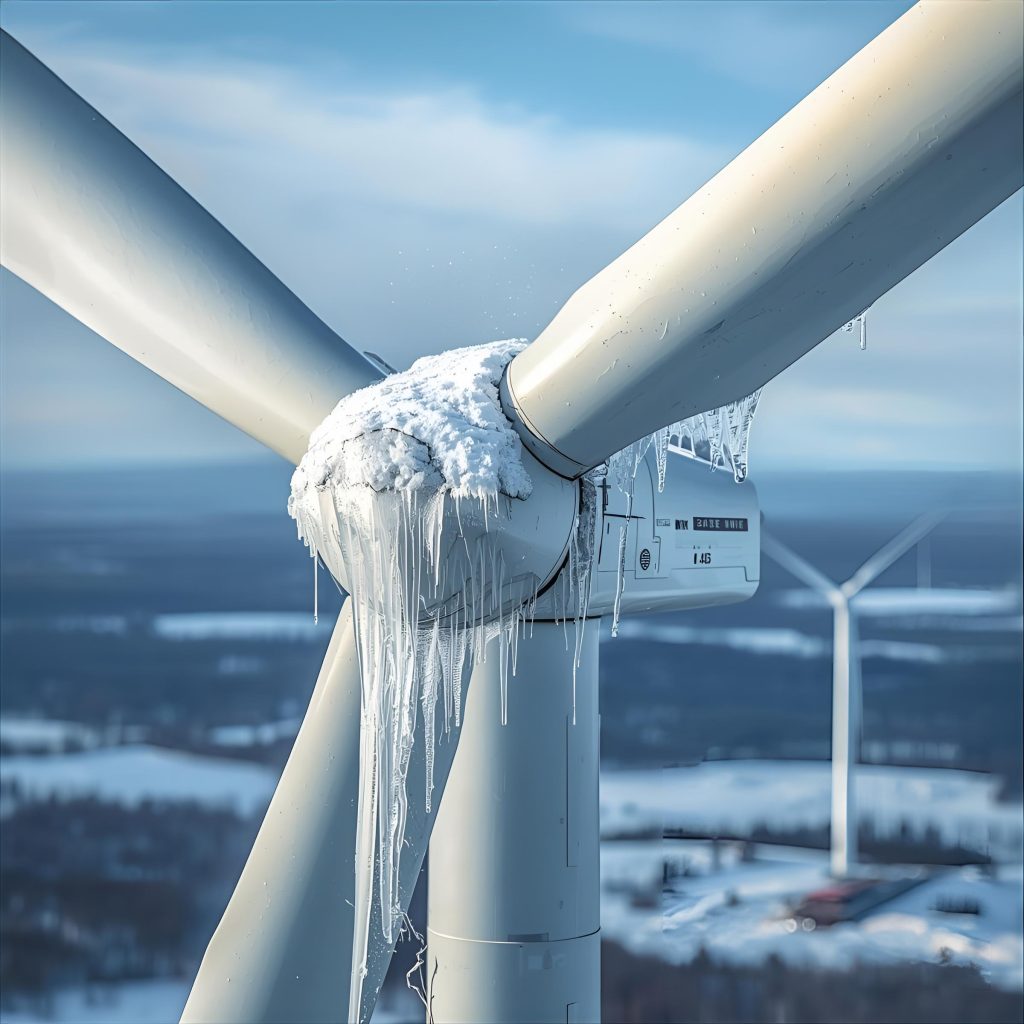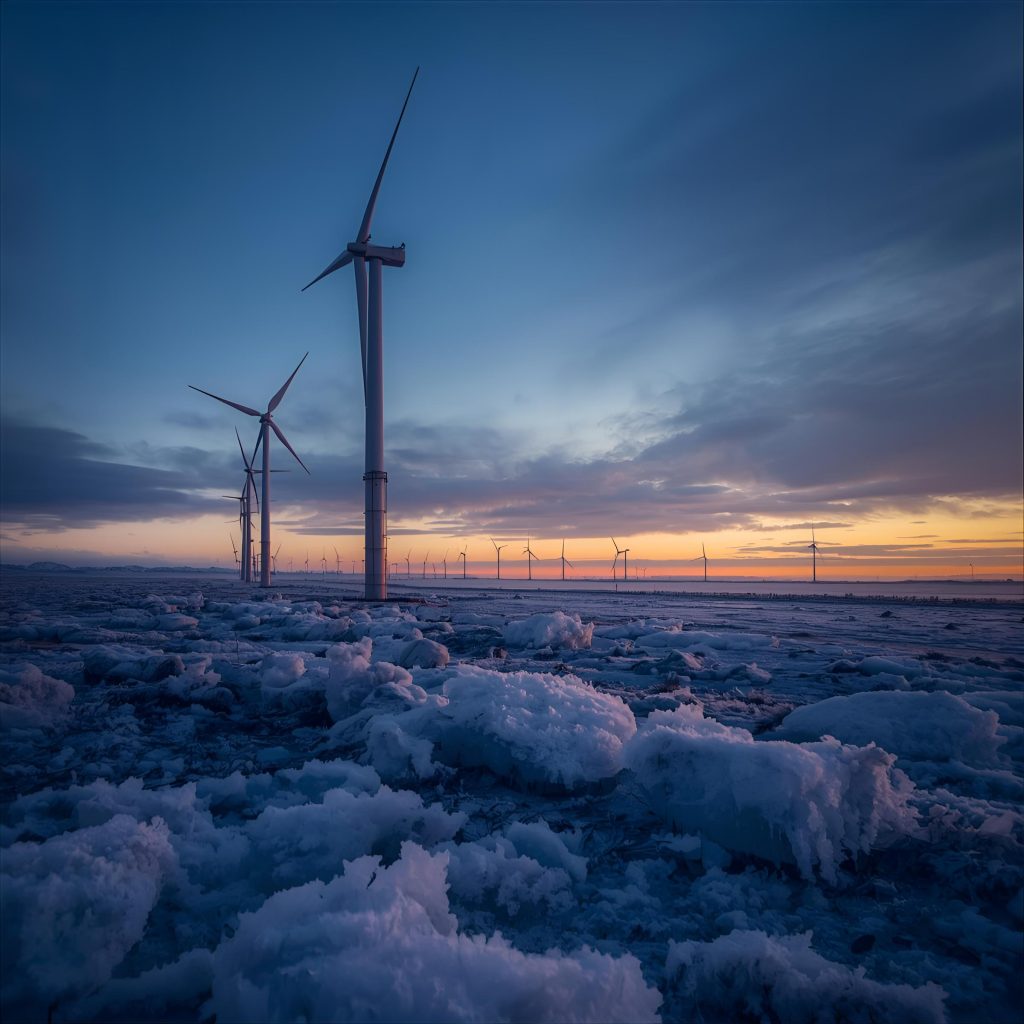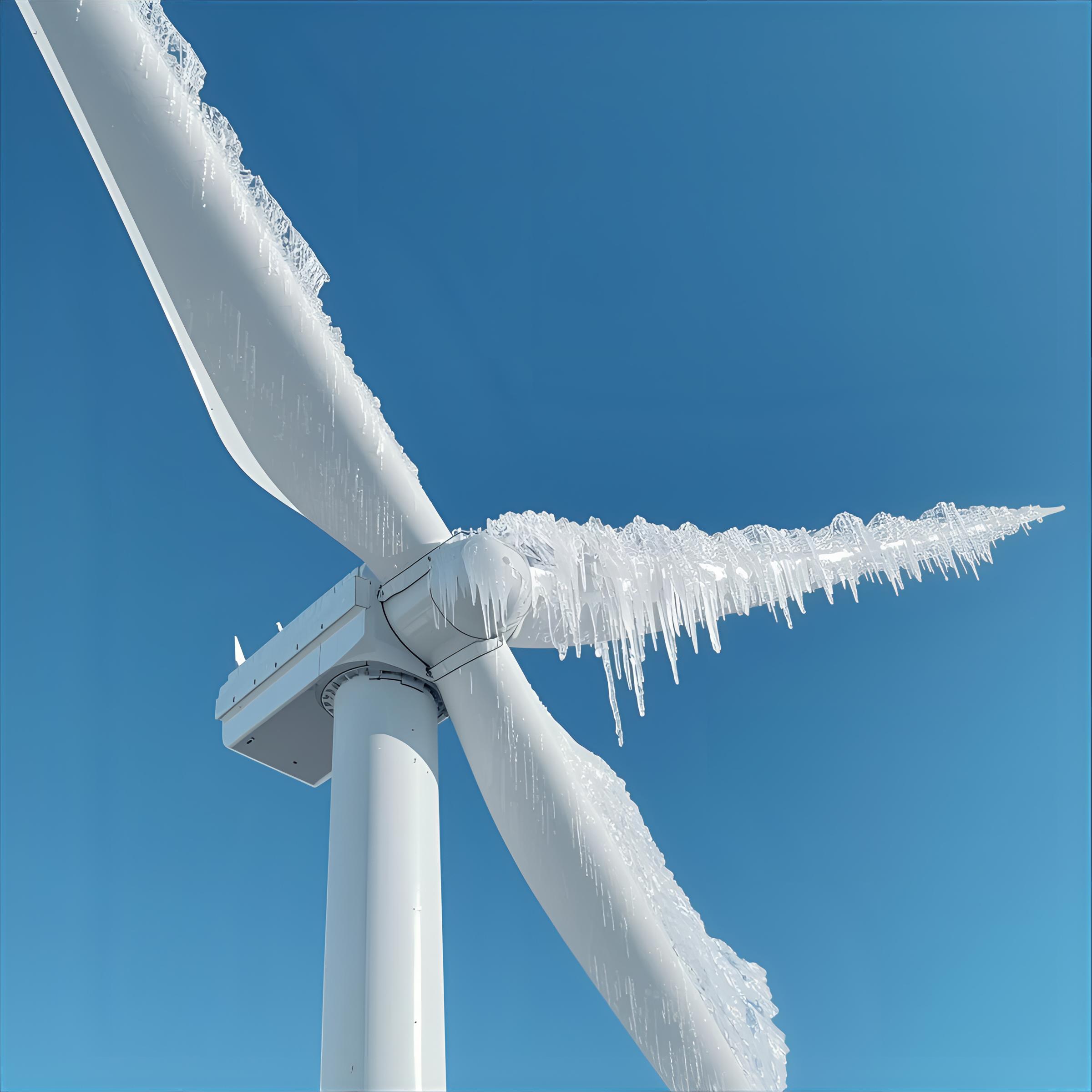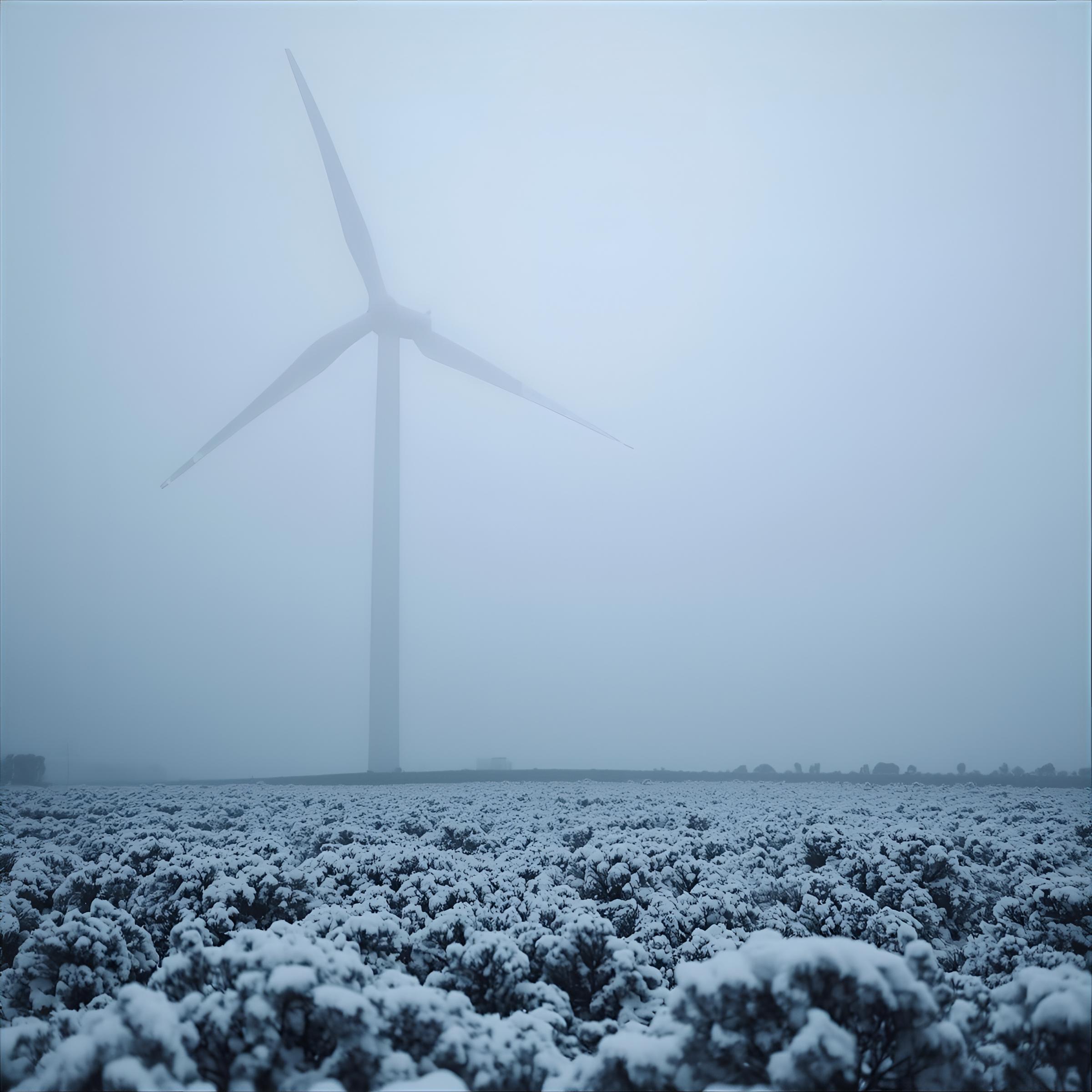
1. The Challenge of Ice Formation on Wind Turbines
Ice accumulation on wind turbine blades and components poses a significant challenge to the renewable energy industry. Ice build-up not only reduces aerodynamic efficiency, leading to power losses, but also increases mechanical stress and safety risks. Addressing this issue is critical for ensuring optimal performance, operational reliability, and minimizing maintenance costs.
2. Importance of Anti-Icing and Deicing
Operational and Economic Impact
Icing events can cause up to a 30% reduction in energy production and lead to unplanned shutdowns. Furthermore, the added weight and imbalance can accelerate wear, increasing maintenance frequency and costs. Implementing effective anti-icing and deicing strategies is essential to maintaining consistent energy output and ensuring the longevity of turbine assets.
3. Anti-Icing Methods
Innovative Strategies to Prevent Ice Formation
Passive Solutions: Use of hydrophobic and ice-phobic coatings to reduce ice adhesion, blade design optimization to minimize ice accumulation zones.
Active Solutions: Integration of electro-thermal heating elements embedded in blades, and ultrasonic vibration systems to prevent ice buildup.


4. Deicing Methods
Effective Techniques to Remove Existing Ice
- Mechanical Methods: Blade vibration systems and automated blade cleaning mechanisms effectively dislodge ice.
- Thermal Methods: Resistive heating and hot-air circulation systems rapidly melt ice with minimal energy use.
- Chemical Methods: Environmentally-friendly anti-icing fluids applied to critical components reduce ice adhesion.
Several of these technologies have been successfully implemented in commercial wind farms, demonstrating significant reductions in downtime and maintenance costs.
5. Research and Development Achievements
Our company is at the forefront of innovation, leveraging Artificial Intelligence (AI) and advanced pitch control systems to enhance anti-icing and deicing performance:
AI-Powered Ice Detection and Prediction: Utilizing machine learning algorithms and sensor data, our AI models accurately predict ice formation conditions in real-time, enabling proactive activation of anti-icing systems.
Intelligent Pitch Control Integration: Our proprietary pitch control technology dynamically adjusts blade angles to minimize ice accumulation and optimize deicing processes, reducing energy consumption and mechanical wear.
Extensive field tests demonstrate that our AI and pitch control solutions increase turbine availability by up to 30% during icy conditions, setting new industry standards for efficiency and reliability.
6. Commercial Applications and Case Studies
Our anti-icing and deicing solutions are deployed across multiple wind farms globally, yielding measurable improvements:
- Case Study
- Client testimonial highlighting reduced maintenance intervals and enhanced safety compliance.
These successes underline the practical value of our research translated into industrial-scale applications.



7. Conclusion & Call to Action
Our R&D department presents a blade angle change model in de-icing mode and presents an electrothermal mat arrangement in anti-icing mode.
Preventing and removing ice from wind turbines is critical for maximizing renewable energy generation and safeguarding assets. Our comprehensive anti-icing and deicing technologies combine cutting-edge research with proven industrial application.
Contact us today to explore partnership opportunities or learn how our solutions can enhance your wind energy projects.
